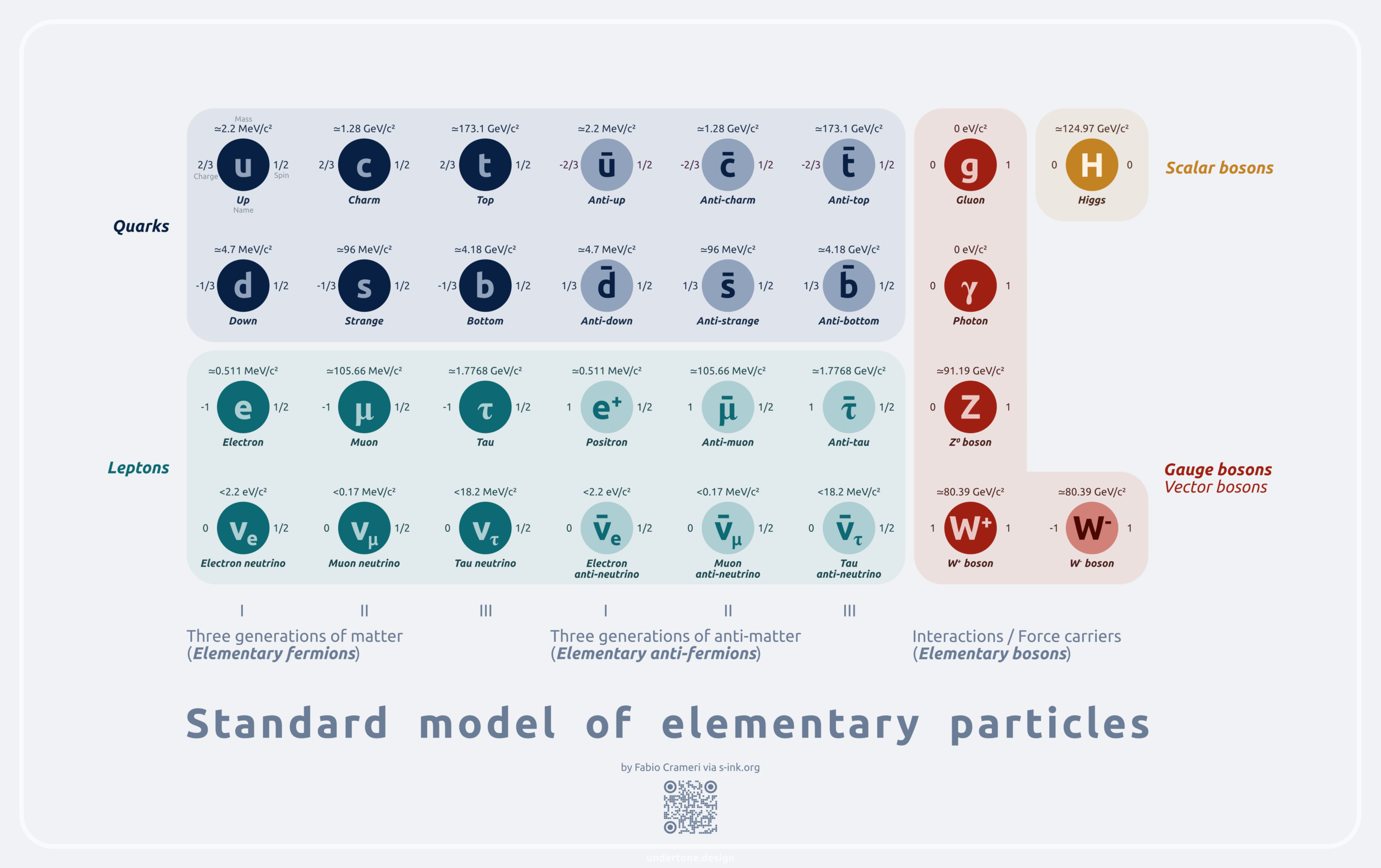The inquiry into the origins of elementary particles is not merely an academic exercise; it probes the very fabric of our existence. This quest links physics, philosophy, and cosmology, a trinity of disciplines that intertwine to unravel the mysteries of the universe. At the heart of this inquiry lies a fundamental question that has captivated scientists and intellectuals alike: Where did my elementary particles originate from?
To embark on this exploration, it is essential to define what constitutes elementary particles. In the lexicon of particle physics, elementary particles are the indivisible building blocks of matter, categorized into two primary groups: fermions and bosons. Fermions make up matter, while bosons are the mediators of interactions. The standard model of particle physics delineates a total of 17 elementary particles, each playing a unique role in the universe’s intricate tapestry.
The conception of particle origins commences with the Big Bang, an event defined not merely as an explosion, but as a singularity—the birth of space, time, and matter. Approximately 13.8 billion years ago, the universe erupted from an extremely hot and dense state, leading to a rapid expansion. During the first microseconds of this cosmic inflation, quantum fluctuations gave birth to a plethora of elementary particles. Quarks, leptons, and gauge bosons emerged in a chaotic turmoil of energy and fundamental forces.
During the initial stages of the universe, quarks bonded together to form protons and neutrons, laying down the foundational bricks of atomic nuclei. This process, known as nucleosynthesis, primarily took place within the first few minutes post-Big Bang. It is an astounding fact that the lightest elements—hydrogen, helium, and trace amounts of lithium—were forged in those earliest moments. However, it is vital to recognize that the formation of ordinary matter was only the beginning of a grander narrative.
As the universe continued to expand and cool, the forces governing interactions began to crystallize. The electromagnetic force, the weak nuclear force, and the strong nuclear force emerged, each playing critical roles in shaping the universe’s subsequent evolution. The union of electrons and protons spawned the primordial atoms, which eventually coalesced to form stars, galaxies, and all the complex structures we observe today. The transmutation from elementary particles to macrocosmic entities encapsulates the marvel of cosmic evolution.
However, the origins of elementary particles are entwined with deeper philosophical implications. The remarkable precision observed in the values of physical constants invites contemplation. Why does the universe exhibit such an apt framework for the existence of life? This has led theorists to propose the Anthropic Principle, positing that the universe’s observed values are finely tuned for the emergence of complex life. An examination of our elementary particles unveils profound connectivity between the fundamental physics of our universe and our existence within it.
Additionally, the enigmatic nature of dark matter and dark energy adds layers of complexity to our understanding. Comprising approximately 95% of the universe’s total mass-energy content, dark matter and dark energy remain elusive. They do not interact with electromagnetic forces, making them invisible to current observational techniques. Speculations abound regarding the potential existence of unknown elementary particles associated with these phenomena. Theories proposing supersymmetry or new gauge bosons fuel the intrigue surrounding these dark components of the cosmos.
The exploration of the origins of elementary particles inevitably brings us to the realm of particle accelerators. Facilities such as the Large Hadron Collider (LHC) probe the fringes of our understanding by recreating conditions akin to those within seconds of the Big Bang. By smashing protons at near-light speeds, physicists examine the fundamental forces and particles that govern the universe. The discovery of the Higgs boson in 2012 marked a monumental achievement, corroborating the existence of the Higgs field—a crucial element that endows particles with mass.
As we delve deeper into the realm of quantum mechanics, the notion of particle-antiparticle pairs introduces an intriguing dichotomy inherent in the quantum world. According to quantum field theory, particles emerge from quantum fluctuations in a vacuum, leading to transient pairs that exist for infinitesimally brief moments. This duality elucidates the fabric of reality, where particles and antiparticles coexist in an ephemeral dance, illustrating the universe’s inherent uncertainty.
Fascination surrounding the origins of elementary particles is also mirrored in the nascent field of quantum cosmology. This multidisciplinary fusion employs principles from both quantum mechanics and general relativity to theorize the conditions that may have existed before our universe came into being. Concepts such as the multiverse hypothesis, where our universe exists among potentially infinite others, challenge conventional perceptions of existence and reality, grappling with questions of causality and the nature of time itself.
In summary, the origins of elementary particles usher us into a profound domain of inquiry that transcends mere scientific exploration. It encapsulates the cosmic saga of our universe, detailing the genesis of matter, the evolution of forces, and the intricate web that binds all constituents of reality. This narrative beckons us to ponder our place within the cosmos and to appreciate the elegance of the fundamental building blocks that shape our understanding of existence. Each elementary particle carries with it a story—a testament to a universe that is as intricate as it is beautiful, inviting us to explore its depths and embrace the mystery of our own origins within it.












